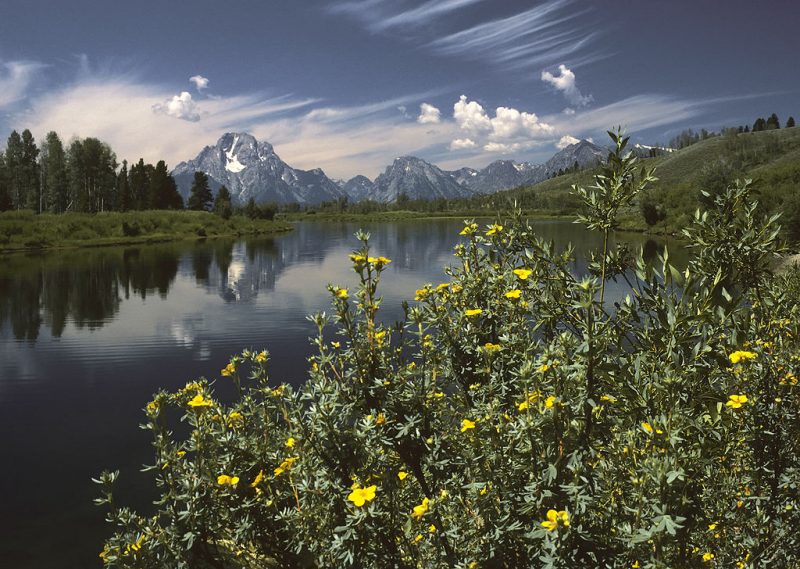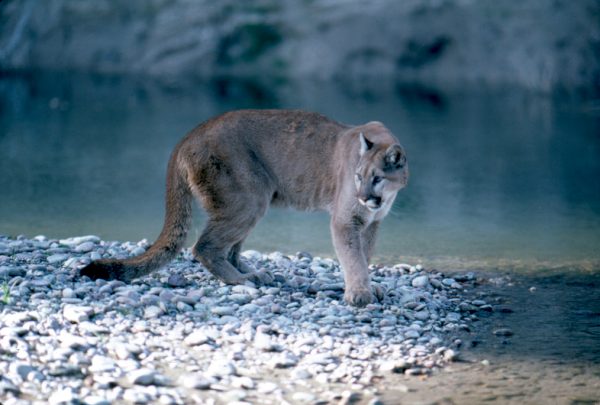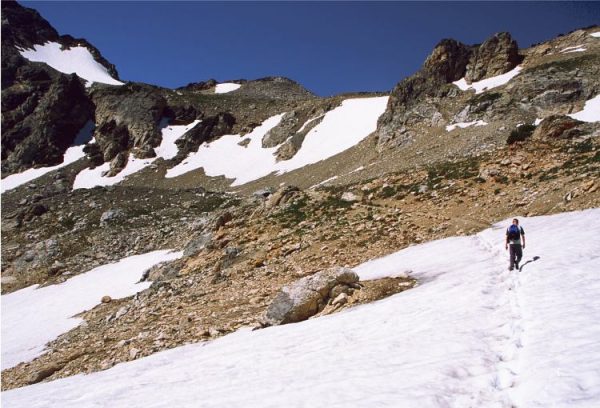A guide through Grand Teton National Park in Wyoming
Grand Teton National Park represents the American nation’s natural wonder and pride. It is a symbol of the pioneer spirit and the exploration of the West, and one of the most diverse national parks in the country. It’s no mystery why so many settlers decided to end their westward journeys in the land of blue skies that reflect in the crystal clear lake water and the endless purple sea of wildflowers.
Grand Teton National Park originally consisted of the Grand Teton Range and six glacial lakes, but with time it grew to include the Jackson Hole Valley. The peak of Grand Teton is 13,775 feet tall and rises 7000 feet above Jackson Hole. The name of Grand Teton comes from the French-speaking trappers who called the mountain Les Trois tétons (the three teats). The park has many lakes, including the 15 mile long Jackson Lake, and countless streams, rivers, and glaciers in the higher parts.

Some of the rocks in the park are among the oldest found in the US, dating from 2.7 billion years ago. The park is home to a large number of flora and fauna species, and some of them have existed here since prehistoric times.
Geological History
The rocks in Grand Teton National Park formed during the Archean Eon 2 to 4.5 billion years ago. These metamorphic rocks are the most common types found in the northern and southern sections of the Teton Range. The metamorphic rocks were intruded by granitic rocks 2.5 billion years ago, which we can see today at Grand Teton and the nearby peaks. Glaciers, rain, and winds have eroded the landscape, shaping it to the topography we see today.
Flora
Grand Teton National Park has more than 1000 plant species growing at different elevations. At approximately 10,000 feet, above the tree line, there are various species of grass, moss, and wildflower. In the subalpine region that starts from the tree line and goes to the base of the mountains, you can spot limber pine, whitebark pine, and subalpine fir. In the valley floor, lodgepole pine is most common, and around lakes and streams you can find aspen, cottonwood, alder, and willow.
Fauna

Grand Teton’s greatest mammal attraction is the gray wolf. As well as the wolves, there are many other species living here, including cougar, coyote, river otter, American black bear, Grizzly, marten, Canadian lynx, and badger. American bison and moose are full-time residents of the park, too. Over 300 species of birds live here, and the fish species representative is the Snake River cutthroat trout.
Mountaineering
Grand Teton National Park is a great climbing destination with well-marked trails and routes. There are different levels of difficulty, and climbers are left on their own to decide where they want to start. It’s a good idea to let local rangers know about your itinerary and get a permit if you’re planning an overnight stay. Owen-Spalding and Exum Ridge are the routes climbers usually follow to get to the top of Grand Teton.
Camping and hiking

The park has 200 miles of hiking trails that you can visit. The easiest trails start in the valley, and the most scenic ones are Emma Matilda Lake Trail and Two Ocean Lake Trail. The greatest elevation change is found on the Paintbrush Canyon, Alaska Basin, and Garnet Canyon Trails with elevations over 4000 feet.
There are five RV-accessible campgrounds in the park. Colter Bay and Gros Ventre campgrounds are the largest with 350 campsites each. Lizard Creek and Signal Mountain campgrounds have 60 and 86 campsites, while the smaller Jenny Lake campground has only 49 sites for tent use only.
Boating
Boating is allowed on all lakes in Jackson Hole, but motor boats can be used only on Jackson Lake and Janny Lake. Bearpaw, Bradley, Emma Matilda, Leigh, Phelps, String, Taggart and Two Ocean Lakes permit only non-motorized boats.
If you have any comments then please drop us a message on our Outdoor Revival Facebook page
If you have a good story to tell or blog let us know about it on our FB page, we’re also happy for article or review submissions, we’d love to hear from you.
We live in a beautiful world, get out there and enjoy it. Outdoor Revival – Reconnecting us all with the Outdoors.





